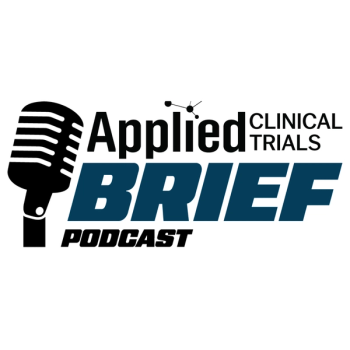
Blenrep Combo Shows Significant Survival Benefit Over Darzalex Combo in Patients with Relapsed or Refractory Multiple Myeloma
Phase III DREAMM 7 trial data show median progression-free survival of 36.6 months with Blenrep (belantamab mafodotin), bortezomib, and dexamethasone compared to 13.4 months with Darzalex (daratumumab), bortezomib, and dexamethasone.
The combination of Blenrep (belantamab mafodotin), bortezomib, and dexamethasone (BVd) demonstrated a significant benefit in progression-free survival (PFS) compared to Darzalex (daratumumab), bortezomib, and dexamethasone (DVd) in patients who experienced progression of multiple myeloma following prior administration of at least one line of therapy, according to findings from the Phase III DREAMM 7 trial (NCT04246047) published in The New England Journal of Medicine.1,2
Blenrep is a first-in-class, anti-B-cell maturation antigen (BCMA) therapy approved by the FDA on August 5, 2020, for adults with relapsed or refractory multiple myeloma previously administered at least four therapies, including an anti-CD38 monoclonal antibody, a proteasome inhibitor, and an immunomodulatory agent. The drug’s antibody component is an afucosylated IgG1 directed against BCMA, a protein expressed on normal B lymphocytes and multiple myeloma cells. After binding to BCMA, Blenrep is internalized, followed by release of MMAF via proteolytic cleavage, which disrupts the microtubule network and causes cell cycle arrest and death. Blenrep has demonstrated antitumor activity in multiple myeloma cells and mediated killing of tumor cells through MMAF-induced apoptosis, as well as by tumor cell lysis via antibody-dependent cellular cytotoxicity and antibody-dependent cellular phagocytosis.3
“Patients with multiple myeloma are treated initially with triplet or quadruplet combination regimens that include proteasome inhibitors, immunomodulators, and anti-CD38 monoclonal antibodies,” the study authors wrote. “Most patients have disease progression after initial treatment, which highlights the need for efficacious second-line combinations that incorporate new therapeutics. (BCMA) is an established target for the treatment of multiple myeloma. [Blenrep] is a BCMA-targeting antibody–drug conjugate with diverse mechanisms of antitumor activity.”1
The open-label, randomized DREAMM 7 trial compared BVd vs. DVd in patients who experienced progression of multiple myeloma following at least one prior line of therapy. The trial’s primary endpoint was PFS, with key secondary endpoints of overall survival (OS), response duration, and minimal residual disease (MRD)–negative status.
Investigators randomly assigned 243 patients to receive BVd and 251 patients to receive DVd. At the time of data cutoff, all patients enrolled in the trial were in the monotherapy phase of treatment. Of the total patient population in each cohort, 33% in the BVd cohort and 20% in the DVd cohort received the trial treatment, with 66% discontinuing Blenrep and 78% discontinuing Darzalex.
At a median follow-up of 28.2 months (range, 0.1 to 40.0), median PFS was 36.6 months (95% confidence interval [CI], 28.4 to not reached) in the BVd cohort compared to 13.4 months (95% CI, 11.1 to 17.5) in the DVd cohort (hazard ratio for disease progression or death, 0.41; 95% CI, 0.31 to 0.53; P<0.001). OS at 18 months was 84% in the BVd cohort compared to 73% in the DVd cohort.
Twenty-five percent of patients in the BVd cohort experienced a complete response or better plus MRD-negative status compared to 10% in the DVd cohort. Grade 3 or higher adverse events (AEs) were reported by 95% of patients in the BVd cohort compared to 78% in the DVd cohort. Ocular AEs were reported by 79% of patients in the BVd cohort compared to 29% in the DVd cohort. These AEs were managed with dose modifications, with AEs involving worsening visual acuity mostly resolved, according to investigators.
The study authors concluded that despite the greater number of serious AEs in the BVd cohort, the strong PFS results as well as its deep and durable responses support the potential for BVd in the treatment of patients with multiple myeloma at or following the first relapse.
“The interim analysis of the DREAMM-7 trial showed that, as compared with DVd therapy, BVd therapy conferred a significant benefit with respect to progression-free survival among patients who had relapsed or refractory multiple myeloma after at least one line of therapy. The hazard ratio for disease progression or death was 0.41 (95% CI, 0.31 to 0.53; P<0.001),” the study authors concluded. “BVd therapy was associated with a greater depth and durability of response than DVd therapy; the percentages of patients who had a stringent complete response, a complete response, and MRD-negative status were higher and the response duration was longer in the BVd group than in the DVd group.”1
References
1. Hungria V, et al. Belantamab Mafodotin, Bortezomib, and Dexamethasone for Multiple Myeloma. N Engl J Med 2024;391:393-407. DOI: 10.1056/NEJMoa2405090. Vol. 391 No. 5.
2. Evaluation of Efficacy and Safety of Belantamab Mafodotin, Bortezomib and Dexamethasone Versus Daratumumab, Bortezomib and Dexamethasone in Participants With Relapsed/Refractory Multiple Myeloma (DREAMM 7). ClinicalTrials.gov ID. December 13, 2023. Accessed August 1, 2024.
3. GSK provides update on DREAMM-3 phase III trial for Blenrep in relapsed/refractory multiple myeloma. GSK. November 7, 2022. Accessed August 1, 2024.
Newsletter
Stay current in clinical research with Applied Clinical Trials, providing expert insights, regulatory updates, and practical strategies for successful clinical trial design and execution.




